The bees have become part of the family here at Sour Cherry Farm, so we were heartbroken to open the hive on the first warm day of winter and find that they were no longer with us. We did try to figure out if they had been attacked by mites, or if perhaps a hive disease called American Foulbrood had killed them. We’re still not sure, but we do know this: there weren’t very many dead bees in the hive.
A few photos of this sad occasion, after the jump.
Greg holds one of the frames. It looks a little warped, but I don’t think that is a symptom of anything but an uneven foundation.
Here’s a closer look at the frame:
One of the tests for foulbrood is to stick a toothpick into one of the cells and see if you have what’s called “ropey” larvae. So we tried that.
It looks a little like a booger, but I don’t think it’s ropey.
A few more pics of the frames:
Here are some of the dead bees clustered. Not very many, though.
Here is why we suspect it might have been mites. There are a lot of them at the bottom of the hive:
It seems like an obscene amount to me, but I am new at this:
We are very sad to have lost our bees.
Very sad, indeed.
One silver lining, though. We’ve got a ton of honey. The entire top super is full. Here’s just one frame, and it yielded almost two quarts.
We have borrowed a centrifuge from our friends John and Philippe and will be harvesting more honey as soon as we can.
And we’ve already ordered more bees.

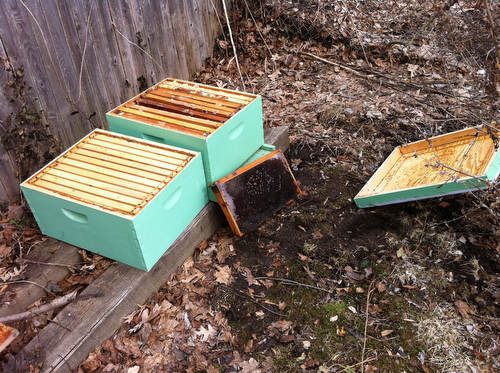
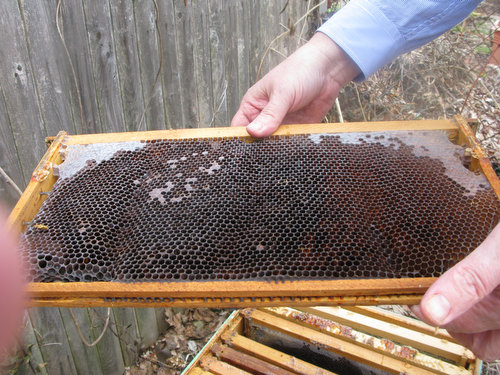
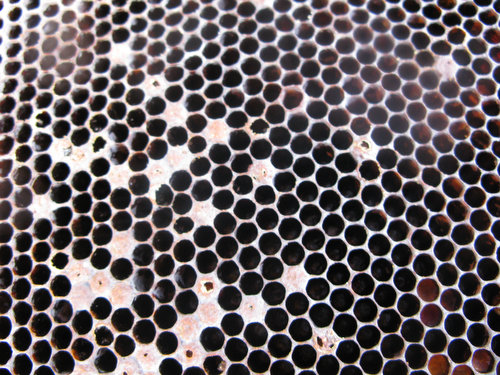
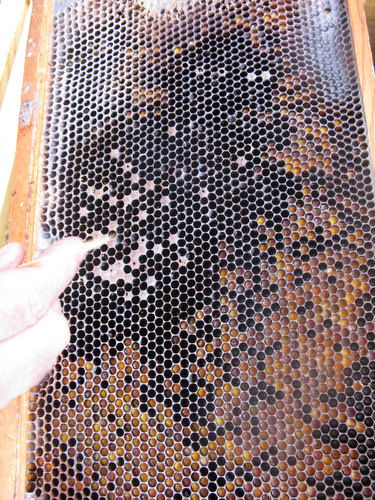
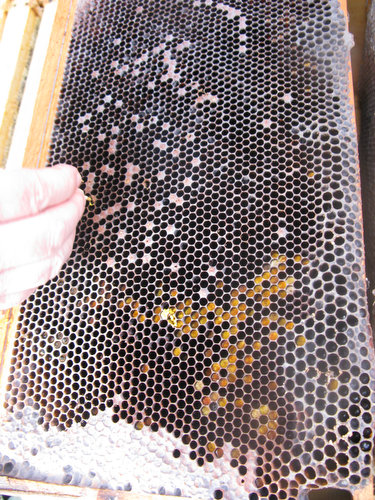
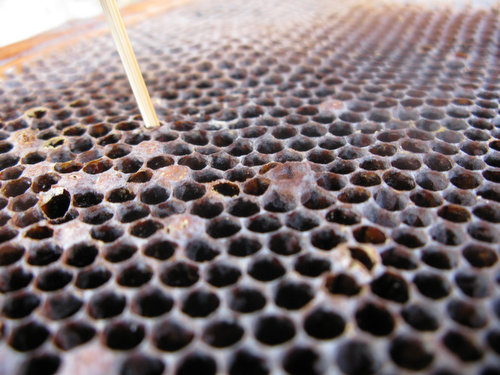
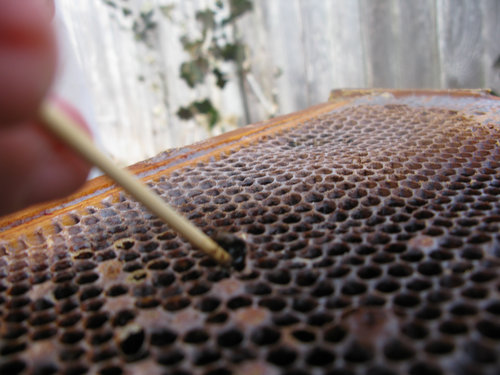
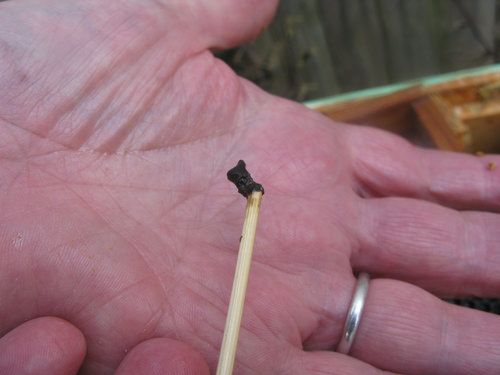

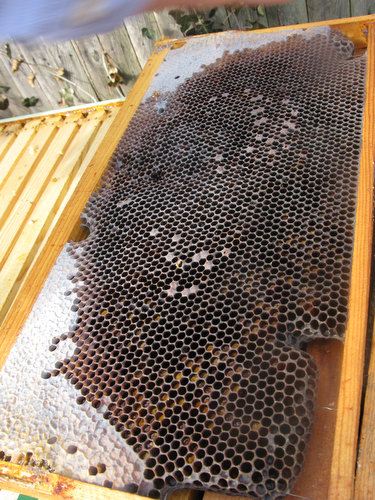
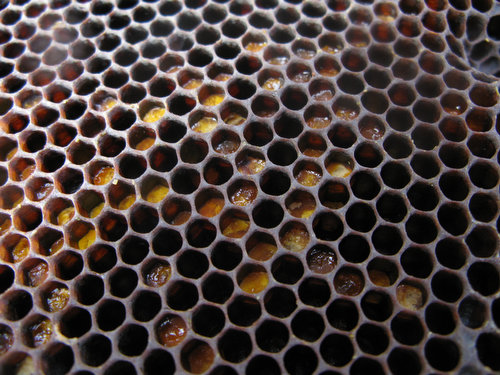
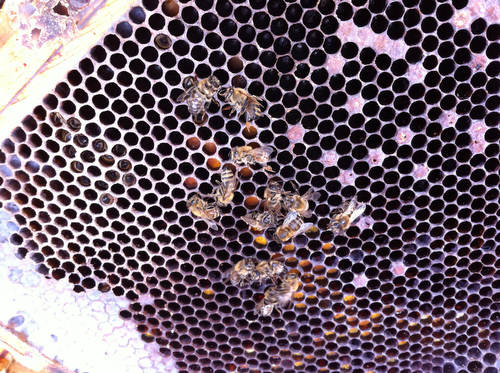
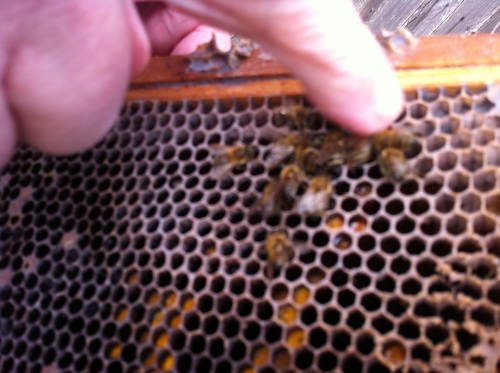
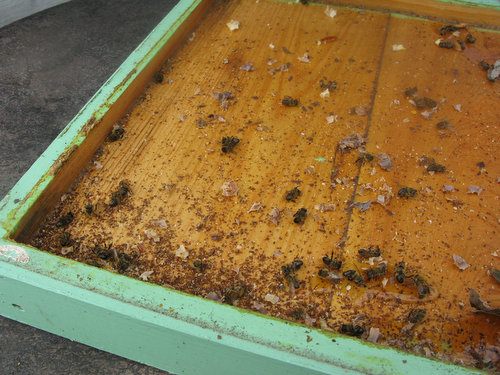
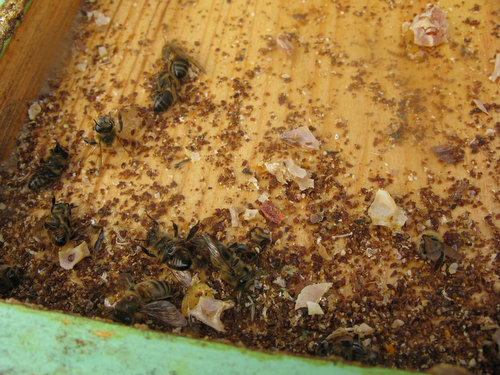
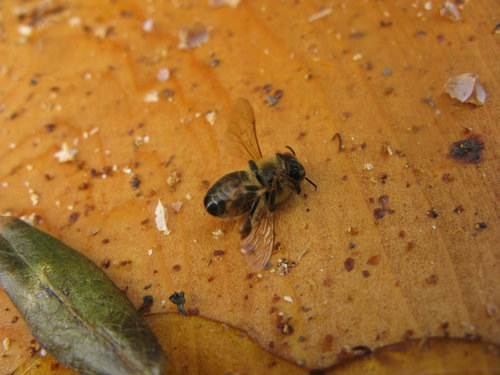
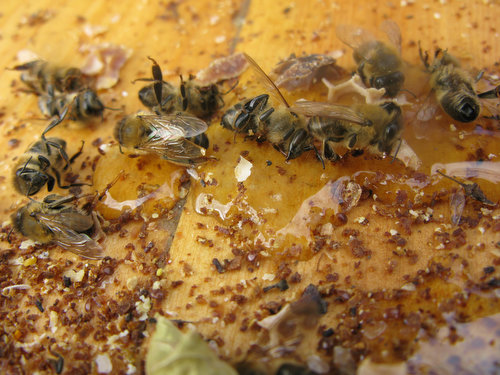
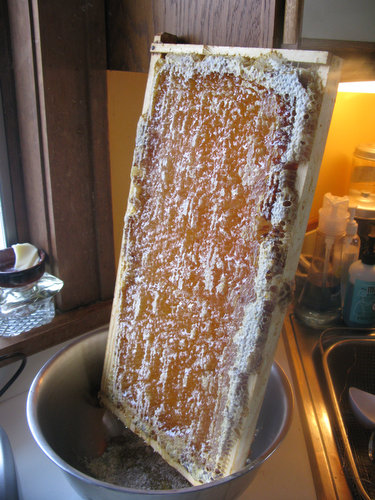
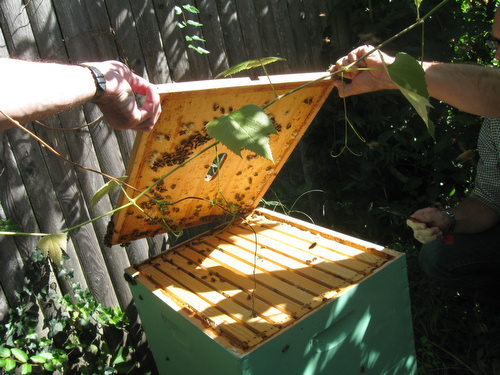
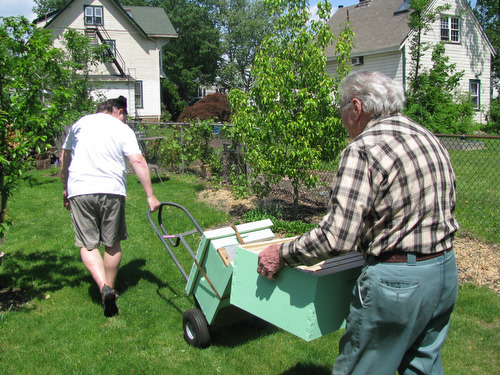
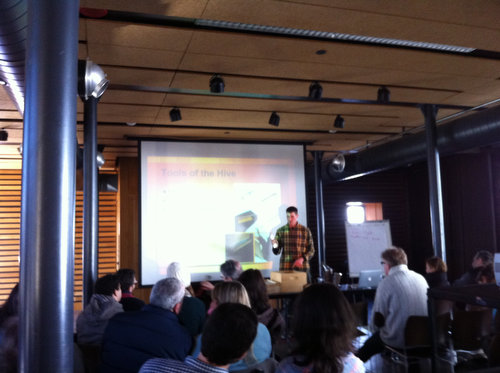
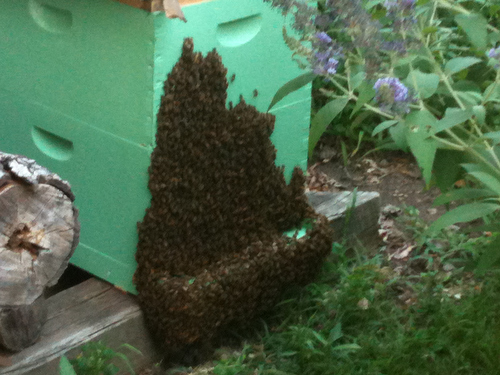



Heartbroken.
Oh, poor bees. I am heartbroken as well.
=( so sorry Liz and Greg
Thank you for your sympathies. Next time you guys are at the farm, we’ll have to hold an Irish wake for them!
Oh, dear. I didn’t know about this till today. So sorry about the bees!
Yikes….
From what I know about AFB, it looks like thats the case. With AFB capping will be part open as seen in picture number 3. Also the lava CAN become ropey, but a sticky black mush is also acceptable. I would contact the Ag commision up there and see if they cant pin it down for you, because if it is AFB, you will probally need to destroy the hive and frames since it is caused by spores. Also… yeah thats a bad mite problem. You can do one or 2 things… get a beeline thats resistant to Verroa mites (Weaver Buckfest liniage)or you can treat with Apistan or Check Mite plus but these can not be in a hive 6 weeks prior to a honey flow. You could get some drone frames, for a holistic method of control. Basically you use the frame, and once its capped, take it out freeze it and scratch the caps so they can pull out all the material. Verroa mites typically lay eggs in drone comb due to the size. Do you guys have a copy of the ABC and XYZ’s of beekeeping?
Hi Stephen, Yes we have a copy of that. Our dear friend John lent it to us.
What do you mean about part open capping? Like halfway on the cell or some closed and some open?
We did not treat for mites last year, but we plan to this year.
Pictures don’t show enough. How many dead bees were there in the hive? Should have been dead bees all over the bottom board. Inch deep sometimes. If only a few, could be CCD. What was the hive’s condition in mid-winter-did they ever fly on warm days and then disappear suddenly? Did it starve? Don’t see any honey in brood nest. Cluster cannot cross into upper super to get honey in cold weather-can only move across honey, not across wood. Bees in empty cells headfirst are starve indication. What’s all that mold on the combs you’re extracting? That’s a sign of poor ventilation. Excessive moisture is a winter killer. Was the hive ventilated properly?
On the brood that are capped, see how a little bit of the capping has been chewed but not fully removed along with the black “boogery” mess of larva are symptoms of AFB. If you can see into the brood comb and theres a scab at the bottom (by bottom, i mean the bottom of the cell if the frame is held like it sits in the hive, not the back of the cell) thats an even stronger sign of AFB… but I haven’t seen it eat a hive like it did yours. I think there were several issues, and wouldn’t be surpised if dysentery played a part in it as well since you guys were snow-bound for a bit.